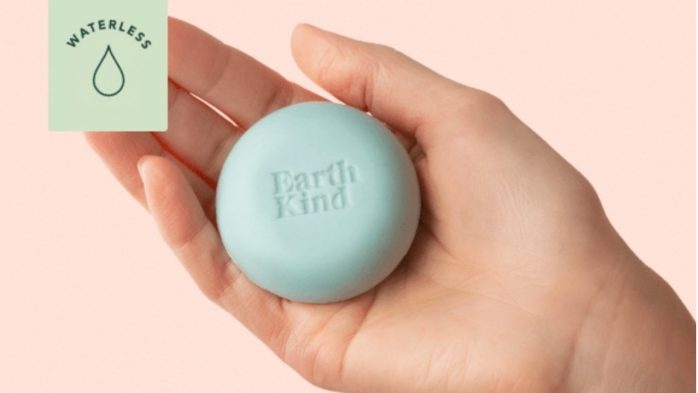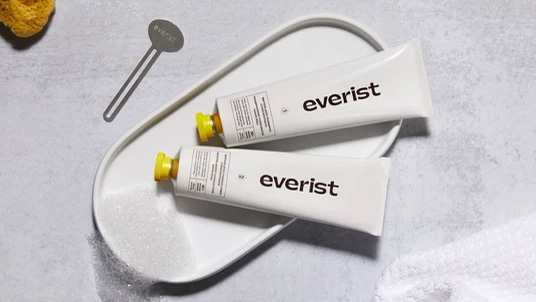
What was once the reserve of brands such a Goop, so-called clean beauty is gathering mainstream pace as customers want to make more ethical, sustainable, and informed choices about what they put on their skin.
Yet, unlike the strict regulations and restrictions placed on what we eat, which make sure we don’t ingest harmful or toxic chemicals, the legal standards surrounding cosmetics and skincare are somewhat lacking. In particular, there are no legal standards surrounding the use of terms such as “organic” and “natural”, for instance.
A recent study from the British Soil Association found that 76% of us feel misled by labelling on beauty products and 72% said they would lose trust in a brand that made misleading claims about being organic.
As the Soil Association explains: “Your skin is the largest organ of your body, and what you put on it is likely to be absorbed into the bloodstream…yet in practice, any brand or beauty product can be labelled as ‘natural’ or ‘organic’ even if it contains virtually no organic or natural ingredients. This is wrong, and the brands using these potentially misleading labels, on products ranging from moisturising shampoos to sunscreens to night creams, need to #ComeCleanAboutBeauty.”
FURTHER READING: Best sustainable beauty brands UK
Clean beauty covers more than products that are just vegan or cruelty-free, although both of these terms factor into it.
Instead, as the name suggests, to be certified as a clean beauty product, it must be sustainable and ethical in both its ingredients and packaging, and it must use organic, sustainable, recyclable and ethically sourced ingredients wherever possible.
Effectively, a clean beauty product needs to go to great lengths to make sure that the manufacturing, testing and distribution of the products have a minimal impact on the environment. They must also not contain any of the following:
Sodium lauryl sulphate, or SLS, is found in many beauty products and is most common in shampoo, shower gel and face wash because it is what turns the liquids in these products into a foamy lather. It is decades old and cheap to produce and use, and in recent years, it has been found to irritate the skin, causing itchy skin and burning.
You can read more about SLS in our Why sodium lauryl sulfate found in high-street shampoos is being shunned by experts article, and ourWhat does shampoo and conditioner actually do? guide.
FURTHER READING: Why sodium lauryl sulfate found in high-street shampoos is being shunned by experts
Microbeads have been a hot topic for years. They’re tiny spheres of plastic found in face and body scrubs, and synthetic toothpastes, and have been found to be polluting oceans.
In 2018, they were banned from beauty products in the UK and now, many products that claim to be able to scrub your face or teeth contain natural ingredients such as sugar, sea salt or coconut fibres.
This means that for a beauty product to be classed as clean, it can’t contain microbeads.
Parabens are used in makeup, suntan lotion and hair products to boost their shelf life and stop bacteria growing. It should be noted that parabens haven’t been directly linked to serious health conditions – Holland & Barrett has an excellent guide detailing more on this – but some studies have suggested parabens disrupt the way our bodies work.
For the avoidance of doubt, clean beauty products ban their use, just in case. They’re also one of the easier ingredients to identify because each ingredient – Methylparaben, Ethylparaben and so on – have paraben in their name.
FURTHER READING: Vegan beauty products: The best affordable vegan makeup and skincare brands in the UK

Taking this a step further, to be considered a truly clean and conscious beauty product, it must also be vegan, cruelty-free and produce zero waste. You can read more about the criteria for these terms in our Vegan vs Cruelty-free: What’s the difference? article.
Cosmetic products in the UK and Europe are subject to EU-wide safety regulations. They must not “cause damage to human health when applied under normal conditions of use or under reasonably foreseeable conditions of use,” and more than 1,300 ingredients are banned in cosmetics in this region.
They also have to adhere to labelling regulations, for example, the package must bear a list of ingredients, headed ‘Ingredients’, in descending order of weight but they don’t have to include “impurities in the raw materials, materials used in the preparation of, but not present in, the final product or materials used as solvents or carriers for perfumes and aromatic compositions.”
In the US, however, beauty is one of the least regulated industries where a meagre 30 ingredients are banned based on legislation that was passed more than 80 years ago, in 1938. Shockingly, this law doesn’t require cosmetic products and ingredients, other than colour additives, to be approved by the Food and Drug Administration before going on sale.
 Everist
Everist There is also a rising trend for waterless beauty products under the clean and conscious beauty umbrella. These products are those which use less water, which is typically used as an inexpensive base ingredient, in favour of concentrated botanicals and natural oils. This is because the UN has predicted that water demand will some outstrip supply and we need to save it where we can.
For instance, Canada-based Everist recently launched a range of waterless haircare concentrates, driven by the fact most shampoos and conditioners on the market are more than 70% water. Yet, the team behind the range didn’t want to release shampoo bars, because they’re “messy”, while powders are too “clumpy.”
Both concentrates are formulated with coconut-derived cleansers, aloe vera and peppermint, amla, and rosemary oils. This formula takes the form of a creamy paste which becomes ‘activated’ by the water in the shower. The plant-based formulas are free-from parabens, sulfates, silicones, dyes, synthetic fragrances, as well as being vegan and cruelty-free.
“We know and care about the impact that the beauty industry is having on the planet,” said Jayme Jenkins, Chief Brand Officer at Everist. “To make eco for the masses we had to do things differently. Our approach is not to solely focus on the ’desire’ to be conscious, but to have formulas that are best-in-class and maintain sustainability throughout their entire product lifecycle.”
Sadly, these products aren’t yet available to buy in the UK but we’ll update this page once they are!
In addition to the ingredients mentioned by the Soil Association, it has also identified ten ingredients in health and beauty products which claim to be organic on the label but are not technically certified organic.
It doesn’t mean these products are unsafe, but it does suggest that buyers are being misled, and some of the ingredients have been found to cause side effects. Clicking the link on each ingredient will take you to a more detailed Soil Association page.
The Soil Association has a list of hundreds of clean beauty brands which have received its own COSMOS certification, although it’s a little clunky to navigate.
COSMOS stands for “COSMetic Organic and Natural Standard” and was launched in 20o2 to “independently and rigorously review the entire manufacturing process including sourcing of ingredients, formulation procedures and premises, as well as packaging.”
In summary, the review says:
NO TO
– Animal testing
– GM ingredients
– Controversial chemicals
– Parabens and Phthalates
– Synthetic colours, dyes or fragrances
YES TO
– Sustainably sourced organic ingredients
– Using natural colours and fragrances from plants and flowers
– Transparent manufacturing processes
– Biodegradable ingredients
– Minimal packaging with maximum
recycled content
– Protecting wildlife and biodiversity
It also has a Clean Beauty League Table revealing the worst offenders. At the time of writing, this includes Boots – Beautiful Hair Moisturise & Nourish Shampoo With Added Organic Argan Oil and Coola’s Makeup Setting Spray.
Elsewhere, the US-based Environmental Working Group (EWG) has devised its own review process and certification for a range of consumer products, with the beauty-specific certification known as EWG Skin Deep. Like the Soil Association, the EWG certifies clean beauty products using a two-part score – a hazard score and a data availability score.
The ingredient hazard score, from 1-10, reflects known and suspected hazards of ingredients while the data availability rating reflects the number of scientific studies relating to those ingredients. The more research, the more data is available.
The total product score is then based on a tally of hazards of individual ingredients when compared against other products in the current Skin Deep database. The safest products score well on both: they’ll have a low hazard rating and a “fair or better” data availability.
You can search the EWG database, look up ingredients and see their possible health concerns. Like CodeCheck, the EWG then recommends safer, cleaner or more conscious alternatives.
